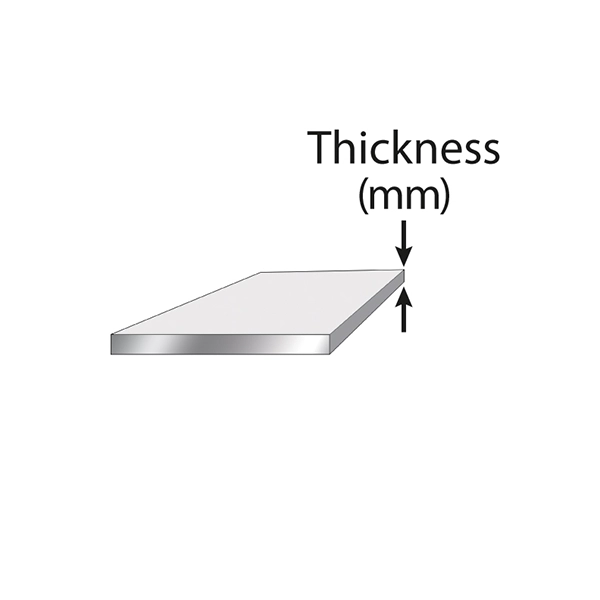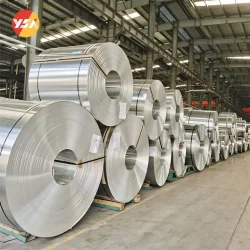Unit of Thickness of Aluminium Sheet Gauge

Aluminum sheet thickness is usually measured in millimeters (mm), inches (inch) and gauge.
1 foot=12 inches
1 inch=25.4 mm
Aluminum Sheet Thickness Inch
Inch is a unit of measurement. The inch is a unit of length used in the United Kingdom and its former colonies. It is generally 1 inch = 2.54cm. In the imperial system, 12 inches is 1 foot and 36 inches is 1 yard. Inch is used on aluminum plates to indicate thickness, generally converted to mm, 1 inch = 25.4mm.
For example, 1 2 inch aluminum plate refers to a thick aluminum plate with a thickness of 12.7mm.
Aluminum Sheet Thickness Millimeter
Millimeters are the most common unit of metal thickness. The English abbreviation is mm, which is an internationally accepted unit of measurement. In thickness, mm and inches can be converted to each other: 1inch = 25.4mm.
Aluminum Sheet Thickness Gauge
GA is the abbreviation of GAUGE, which is a North American length measurement unit for diameter. It belongs to the Browne & Sharpe measurement system and was originally used in the medical and jewelry fields. The larger the number, the smaller the diameter, and later also the thickness.
Gauge to mm Conversion for Aluminium Sheet
There is no standard conversion formula for gauge and mm. Secondly, they are both 16gauge. Different metal materials have different corresponding values.
16 gauge is equivalent to 1.65mm.
11 gauge is equivalent to 3.05mm.
14 gauge is equivalent to 0.0800 inches = 2.03 mm.
15 gauge is equivalent to 0.0720 inches = 1.83 mm.
Standard Aluminium Gauge Thickness
Gauge | Standard Steel Thickness (inches) | Galvanized Steel Thickness (inches) | Aluminum Thickness (inches) | Aluminum Thickness (mm) |
3 | 0.2391 | 0.2294 | 5.82676 | |
4 | 0.2242 | 0.2043 | 5.18922 | |
5 | 0.2092 | 0.1819 | 4.62026 | |
6 | 0.1943 | 0.162 | 4.1148 | |
7 | 0.1793 | 0.1443 | 3.66522 | |
8 | 0.1644 | 0.1285 | 3.2639 | |
9 | 0.1495 | 0.1532 | 0.1144 | 2.90576 |
10 | 0.1345 | 0.1382 | 0.1019 | 2.58826 |
11 | 0.1196 | 0.1233 | 0.0907 | 2.30378 |
12 | 0.1046 | 0.1084 | 0.0808 | 2.05232 |
13 | 0.0897 | 0.0934 | 0.072 | 1.8288 |
14 | 0.0747 | 0.0785 | 0.0641 | 1.62814 |
15 | 0.0673 | 0.071 | 0.0571 | 1.45034 |
16 | 0.0598 | 0.0635 | 0.0508 | 1.29032 |
17 | 0.0538 | 0.0575 | 0.0453 | 1.15062 |
18 | 0.0478 | 0.0516 | 0.0403 | 1.02362 |
19 | 0.0418 | 0.0456 | 0.0359 | 0.91186 |
20 | 0.0359 | 0.0396 | 0.032 | 0.8128 |
21 | 0.0329 | 0.0366 | 0.0285 | 0.7239 |
22 | 0.0299 | 0.0336 | 0.0253 | 0.64262 |
23 | 0.0269 | 0.0306 | 0.0226 | 0.57404 |
24 | 0.0239 | 0.0276 | 0.0201 | 0.51054 |
25 | 0.0209 | 0.0247 | 0.0179 | 0.45466 |
26 | 0.0179 | 0.0217 | 0.0159 | 0.40386 |
27 | 0.0164 | 0.0202 | 0.0142 | 0.36068 |
28 | 0.0149 | 0.0187 | 0.0126 | 0.32004 |
29 | 0.0135 | 0.0172 | 0.0113 | 0.28702 |
30 | 0.0120 | 0.0157 | 0.01 | 0.254 |
31 | 0.0105 | 0.0142 | 0.0089 | 0.22606 |
32 | 0.0097 | 0.0134 | 0.008 | 0.2032 |
33 | 0.0090 | 0.0071 | 0.18034 | |
34 | 0.0082 | 0.0063 | 0.16002 | |
35 | 0.0075 | 0.0056 | 0.14224 | |
36 | 0.0067 |
Common Aluminium Sheet Metal Gauges
How to Check Aluminium Gauge
To check the specifications of aluminum sheets, sheet metal gauges and micrometers are mainly used:
1. Sheet Metal Gauge: Place the edge of the aluminum plate against the marked groove of the sheet metal gauge. Slide the aluminum plate along the gauge until it fits snugly into the narrowest slot without using force. Finally read the number or size indicated by the slot where the sheet is located.
2. Using a micrometer: Make sure your micrometer is calibrated and set to millimeters or inches. Place the jaws of the micrometer on opposite sides of the aluminum plate, making sure they are perpendicular to the surface. Apply gentle pressure and close the micrometer jaws until the plate is secured. Read the measurement displayed on the micrometer.
Keep in mind that the lower the gauge number, the thicker the aluminum sheet. Conversely, the higher the gauge number, the thinner the sheet.

